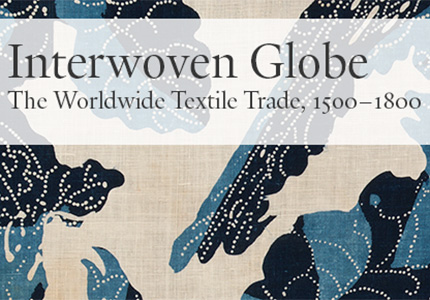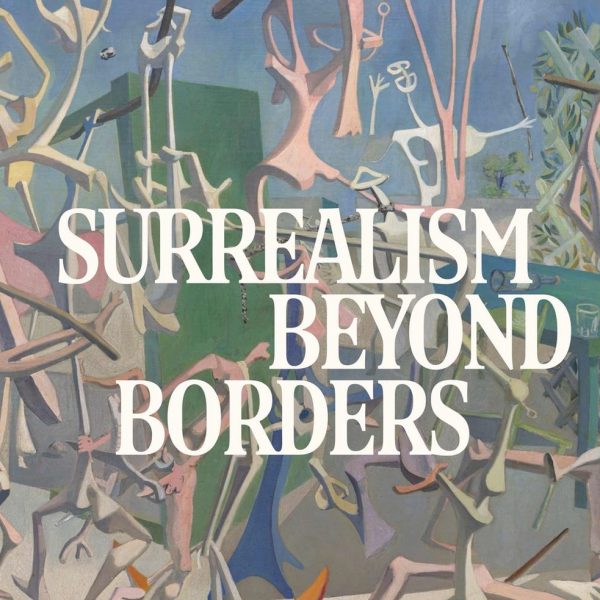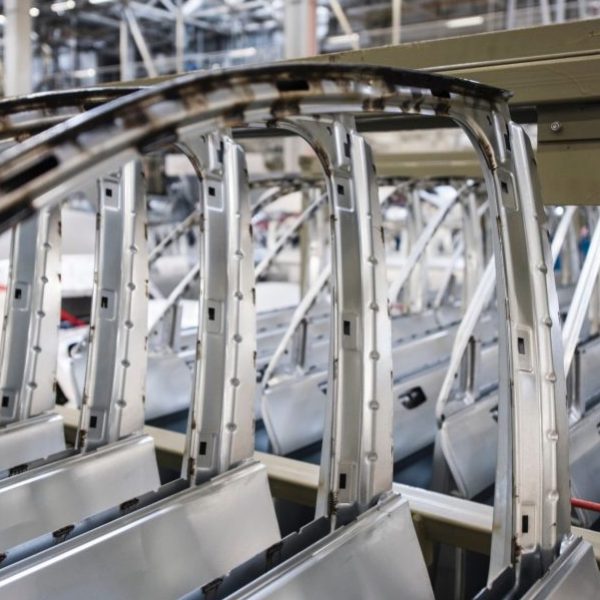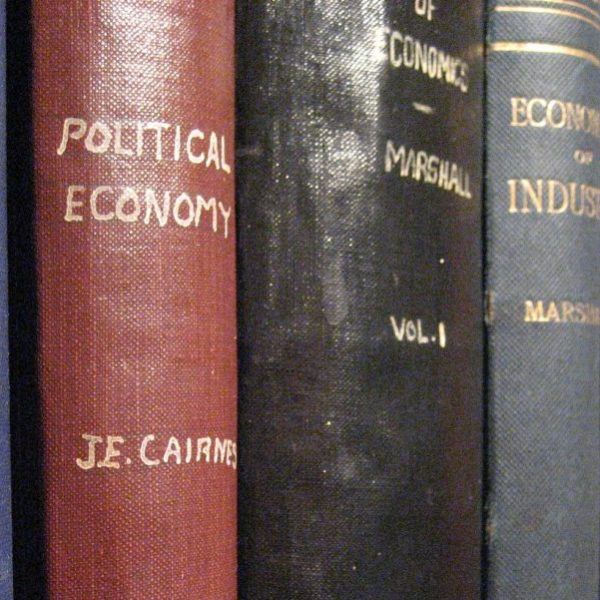Notes from the Field: The Medium is the Message
View the New York Times ‘Interwoven Globe’ Exhibition Slide Show
Interwoven Globe: The Worldwide Textile Trade, 1500-1800 tells a fascinating history of global textile design through the intertwined narratives of trade across continents, oceans, and eras. Drawing on The Metropolitan Museum of Art‘s incredibly rich textiles collection—much of which the museum has not publicly displayed—the exhibition shows how global economic exchange, beginning in the 16th century, influenced not just fabric design and the popularity of certain materials, such as silk or cotton, and dyes, such as indigo, but served to establish certain global aesthetic codes. Curator Amelia Peck writes in her introduction to the exhibition catalog,
“Because the scope of the textile trade was so wide by the mid-17th century, the constant exchange of exotic design motifs, fibers, and dyes between these now interconnected markets brought into being, for the first time, a common visual language of design that was recognizable throughout the world.”
At the same time, the materials on display very often reveal the extent to which the cross-cultural interactions facilitated by trade appear, literally, woven into the fabrics themselves.
 To visit is to tour a vast depiction of human proclivities and follies—commerce, fashion, conquest, love, marriage, warfare—rendered in painstakingly composed tableaux of thread, ink, and cloth. In purely visual terms the result is stunning; with each turn into a new gallery viewers are met with vibrant patterns whose palette and complexity are often vivid though never garish. And yet while it is easy enough to be awed by the beauty alone of the dresses and tapestries, their elaborate provenances are too intriguing to be ignored. The show progresses chronologically and geographically, with topical detours. It begins with 15th-century Portugal, the first European nation to navigate beyond the Cape of Good Hope, whose sailors introduced Western designs to Asian craftsman, who in turn incorporated the motifs into their pre-existing designs. The incredible popularity of the resulting hybridized patterns—and the status they imbued upon their wearers—eventually led to European workshops producing their own renditions of the Asian fabrics. From here we move west to colonial Latin America where Spaniards commissioned textiles, such as wedding tapestries, from local Incan workers in Peru and formed workshops to teach Mexico’s indigenous population to produce fabrics for the Catholic Church. One especially striking example, a wedding coverlet made in the Yucatán in 1786, features couple in European dress rendered in thread made from both European and Mexican dyes and on silk that likely made its way from China by way of Acapulco on Mexico’s west coast. The exhibition then ventures into Chinese and European trade in the 16th century as well as the, perhaps lesser known, robust textile trade Japan conducted with their Asian neighbors despite legal restrictions on any Japanese actually leaving the country. Here we begin to see signs of India’s involvement with this burgeoning global exchange, for example in the stunning 18th-century example of a deep turquoise cotton with dark pink rosettes that was produced in India for the Japanese market. The following gallery looks specifically at Indian cotton, focusing closely on the hand painted cottons that became wildly popular as decorative arts—bedcovers and wall hangings—and in fashion in Europe. Because of the feared economic impact this would have on local craftsmen, laws were passed in the 18th century barring the import of Indian fabrics into France and England. Whether law-abiding or simply focused locally, Versailles, to which an entire gallery of the exhibition is devoted, commissioned locally-produced tapestries that told of global domination with depictions of Asia, Africa, and the New World at the mercy of France. Louis XVI, alas, did not live to see the finished product.
To visit is to tour a vast depiction of human proclivities and follies—commerce, fashion, conquest, love, marriage, warfare—rendered in painstakingly composed tableaux of thread, ink, and cloth. In purely visual terms the result is stunning; with each turn into a new gallery viewers are met with vibrant patterns whose palette and complexity are often vivid though never garish. And yet while it is easy enough to be awed by the beauty alone of the dresses and tapestries, their elaborate provenances are too intriguing to be ignored. The show progresses chronologically and geographically, with topical detours. It begins with 15th-century Portugal, the first European nation to navigate beyond the Cape of Good Hope, whose sailors introduced Western designs to Asian craftsman, who in turn incorporated the motifs into their pre-existing designs. The incredible popularity of the resulting hybridized patterns—and the status they imbued upon their wearers—eventually led to European workshops producing their own renditions of the Asian fabrics. From here we move west to colonial Latin America where Spaniards commissioned textiles, such as wedding tapestries, from local Incan workers in Peru and formed workshops to teach Mexico’s indigenous population to produce fabrics for the Catholic Church. One especially striking example, a wedding coverlet made in the Yucatán in 1786, features couple in European dress rendered in thread made from both European and Mexican dyes and on silk that likely made its way from China by way of Acapulco on Mexico’s west coast. The exhibition then ventures into Chinese and European trade in the 16th century as well as the, perhaps lesser known, robust textile trade Japan conducted with their Asian neighbors despite legal restrictions on any Japanese actually leaving the country. Here we begin to see signs of India’s involvement with this burgeoning global exchange, for example in the stunning 18th-century example of a deep turquoise cotton with dark pink rosettes that was produced in India for the Japanese market. The following gallery looks specifically at Indian cotton, focusing closely on the hand painted cottons that became wildly popular as decorative arts—bedcovers and wall hangings—and in fashion in Europe. Because of the feared economic impact this would have on local craftsmen, laws were passed in the 18th century barring the import of Indian fabrics into France and England. Whether law-abiding or simply focused locally, Versailles, to which an entire gallery of the exhibition is devoted, commissioned locally-produced tapestries that told of global domination with depictions of Asia, Africa, and the New World at the mercy of France. Louis XVI, alas, did not live to see the finished product.
Several thematically-organized galleries round out the show. One room demonstrates the relationship of religion and textile trade—including the introduction of fabrics produced in East Asia, Iran, and Turkey into European churches and the relationship between Catholic missionaries and textile production in Latin America. A section titled “Looking East, Looking West” explores representations of foreigners in Asian and European fabrics as well as the popularity, in 18th-century Europe, of “Asian” dressing gowns and robes. A small room is dedicated to representations of conflict in textiles, an especially intriguing example being an 18th-century fabric, produced in India, that showcases two groups of men in European dress in the heat of battle. The final phase of the expansive exhibition winds into 18th-century North America where a loophole in British law meant that Chinese silks not legally purchased in the United Kingdom could be purchased (and so existed in large quantities) in the colonies. Following American independence and the rise of cotton production in the South, this once-robust market dwindled.
If this sounds exhaustive, it is. And it’s almost certainly worth more than one visit to truly take it all in. The sheer scope of information and material at hand is staggering, and the connections presented therein between cultures that were, upon first encounter, so wildly disparate is fascinating, perhaps most so because of the common visual languages that were so quickly produced and distributed. So much here can be seen as a precursor to our own commodity-saturated 21st-century global cultural landscape. Considering the expansive geography of production and distribution, and the status these disseminated objects implied, even across cultures that did not share a common spoken language or social histories, the gorgeous 18th-century white wedding quilt with its Chinese silk, Mexican and Spanish dyes, and European newlyweds festooning the middle parallels any number of modern-day commodities with complicated, diffuse manufacturing and distribution. A connection between aesthetic appropriation and the global marketplace for status symbols is striking, and important – it is a major reason why Interwoven Globe is such a brilliant project. What is on display is not just history, but a visual narrative of globalization and global exchange in very nascent and pure forms.
One might also glean, from Peck’s lucid catalog essay on the subject, evidence of just how problematic these culturally hybrid objects can be for institutional representations of material history. Prior to Interwoven Globe, the Met, which has a long and highly regarded tradition of textile display, had not organized a cross-cultural textile exhibition since 1926. The issue could be purely organizational – to whom does a Chinese textile produced for the Portuguese market belong? Which department claims it for their show? Is it Asian or European? This exhibition, with its answer of “neither and both,” allows for the complexity of the project, and reveals much about historic and contemporary predicaments.


























